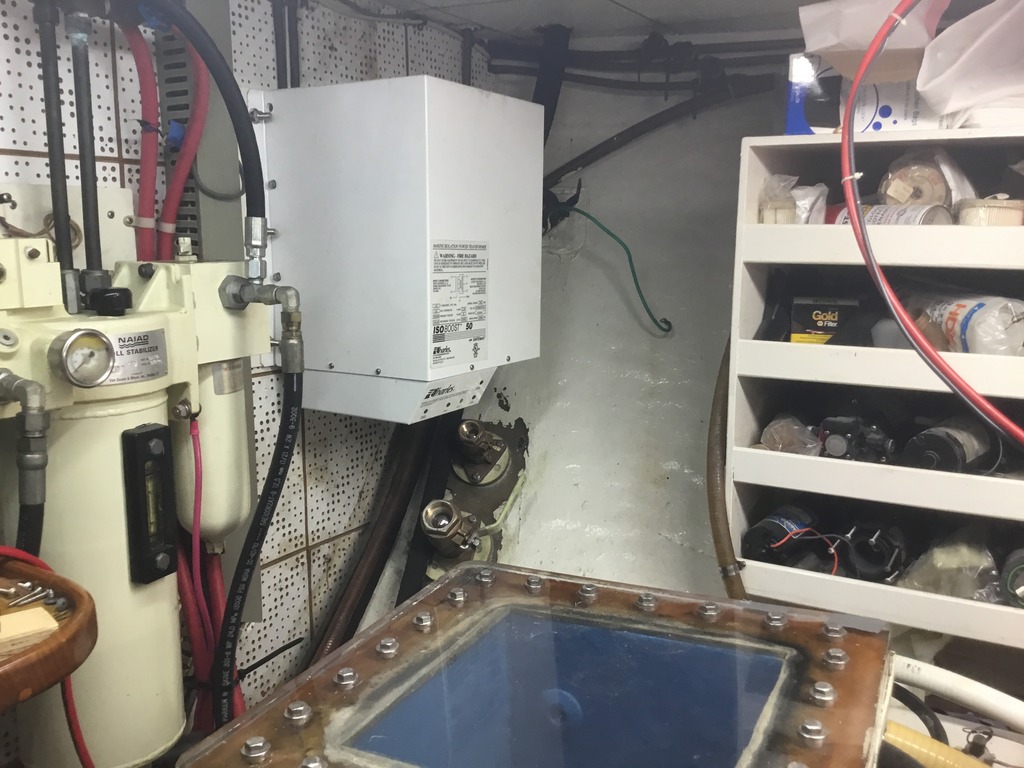JDCAVE
Guru
- Joined
- Apr 3, 2011
- Messages
- 2,902
- Location
- Canada
- Vessel Name
- Phoenix Hunter
- Vessel Make
- Kadey Krogen 42 (1985)
I have purchased and am preparing to install a Charles 30 Amp Isolation Transformer (93ISOG26A) on one of my 30 amp inputs. We only use one of the 30 amp sources as all loads can be accommodated with one. Obviously this will be installed somewhere inside the boat. The input is located behind the washer dryer and there is a tangle of copper plumbing behind there. Also, based on feedback from other KK42 owners, you pretty much have to decommission the stacked washer/dryer unit in order to get back there. I'd like to leave that for another time. The issue:
These units are heavy (70 lbs inside a plywood packing case) but compact. You just can't locate them any old place. I was thinking of locating it where the old freedom inverter charger was located aft of the fuel tank as the backing is sufficiently beefy. I would guess there would be a wire run of some 20 feet to that location and another 20 feet back to the AC panel. Since we are talking about 120 AC, is there any problem with the length of these wire runs?
Second: I assume that the old galvanic isolator should be decommissioned?
Jim
These units are heavy (70 lbs inside a plywood packing case) but compact. You just can't locate them any old place. I was thinking of locating it where the old freedom inverter charger was located aft of the fuel tank as the backing is sufficiently beefy. I would guess there would be a wire run of some 20 feet to that location and another 20 feet back to the AC panel. Since we are talking about 120 AC, is there any problem with the length of these wire runs?
Second: I assume that the old galvanic isolator should be decommissioned?
Jim



